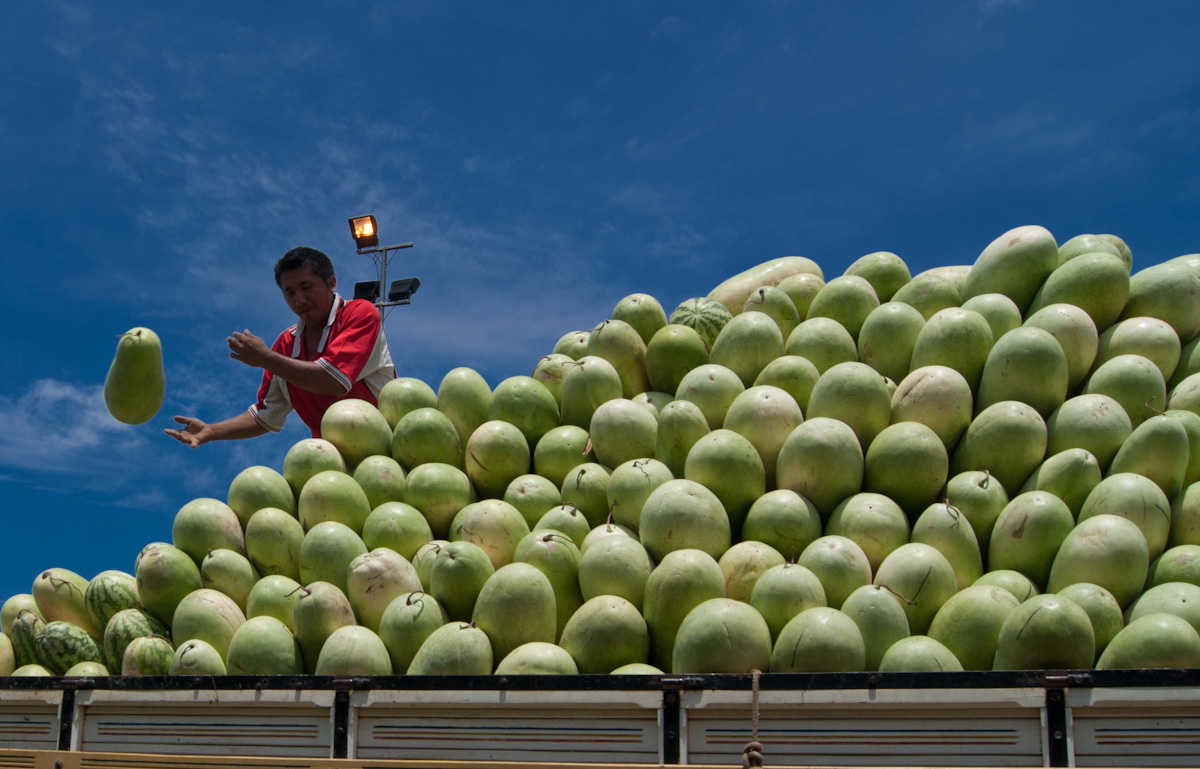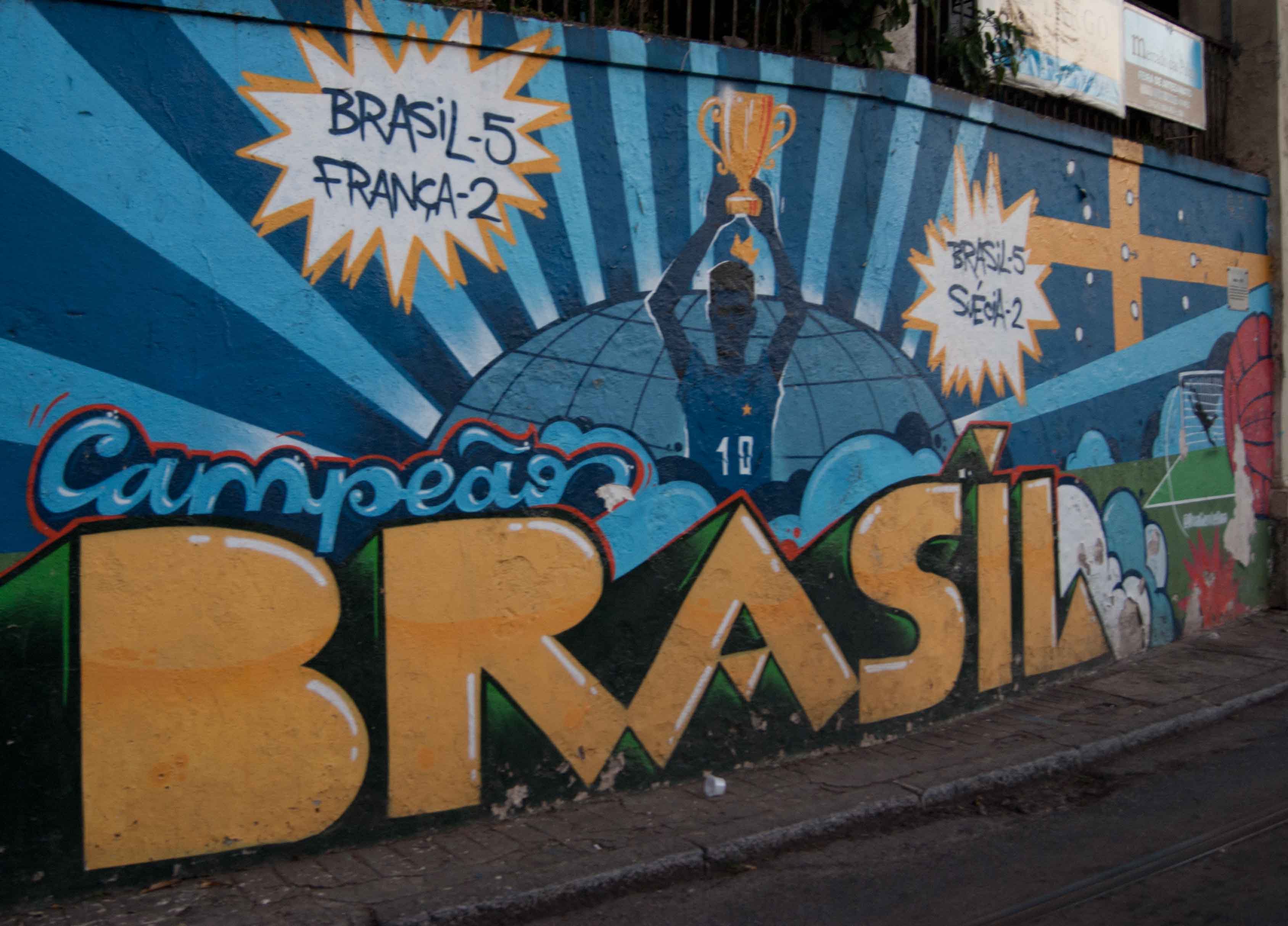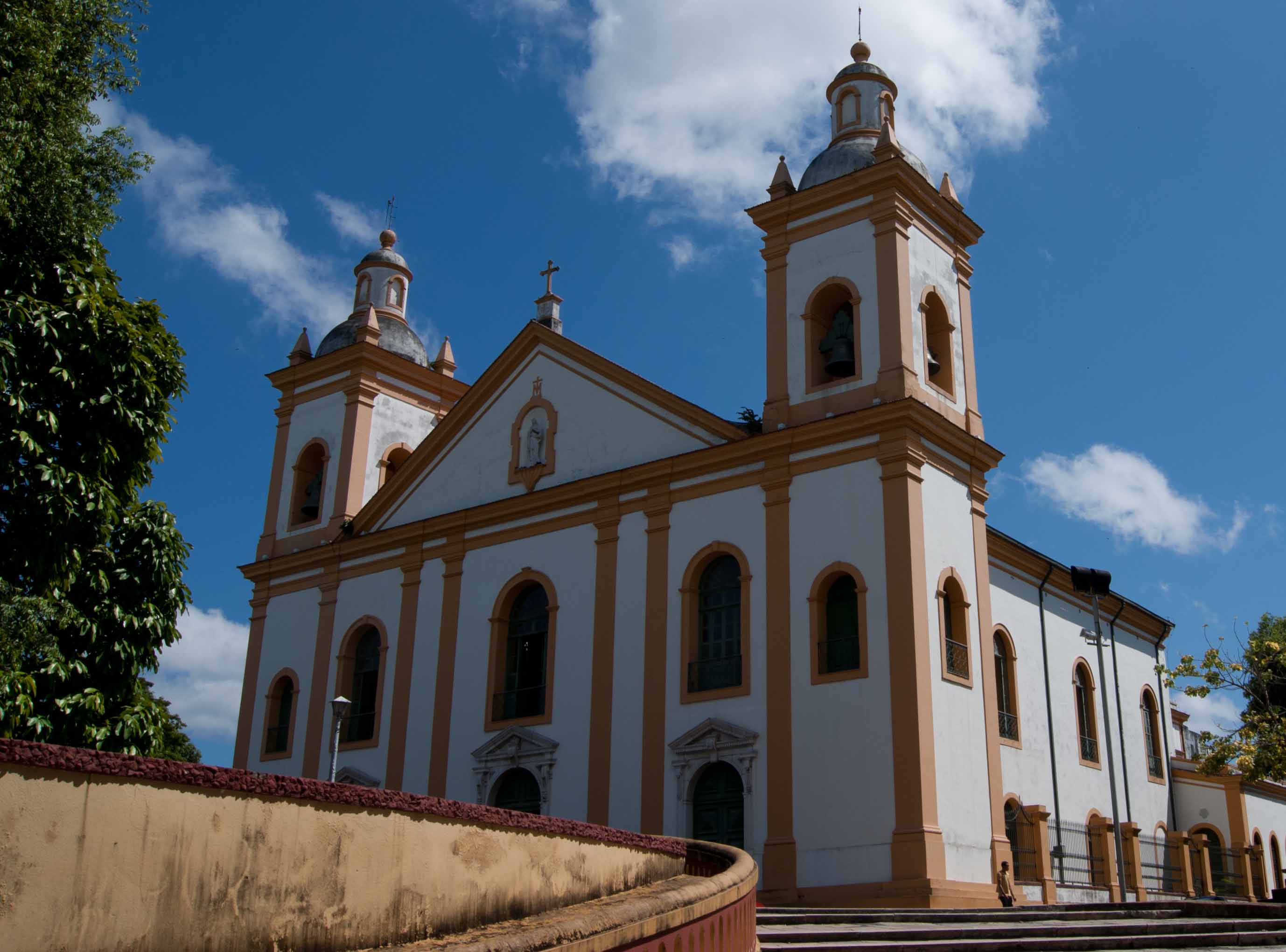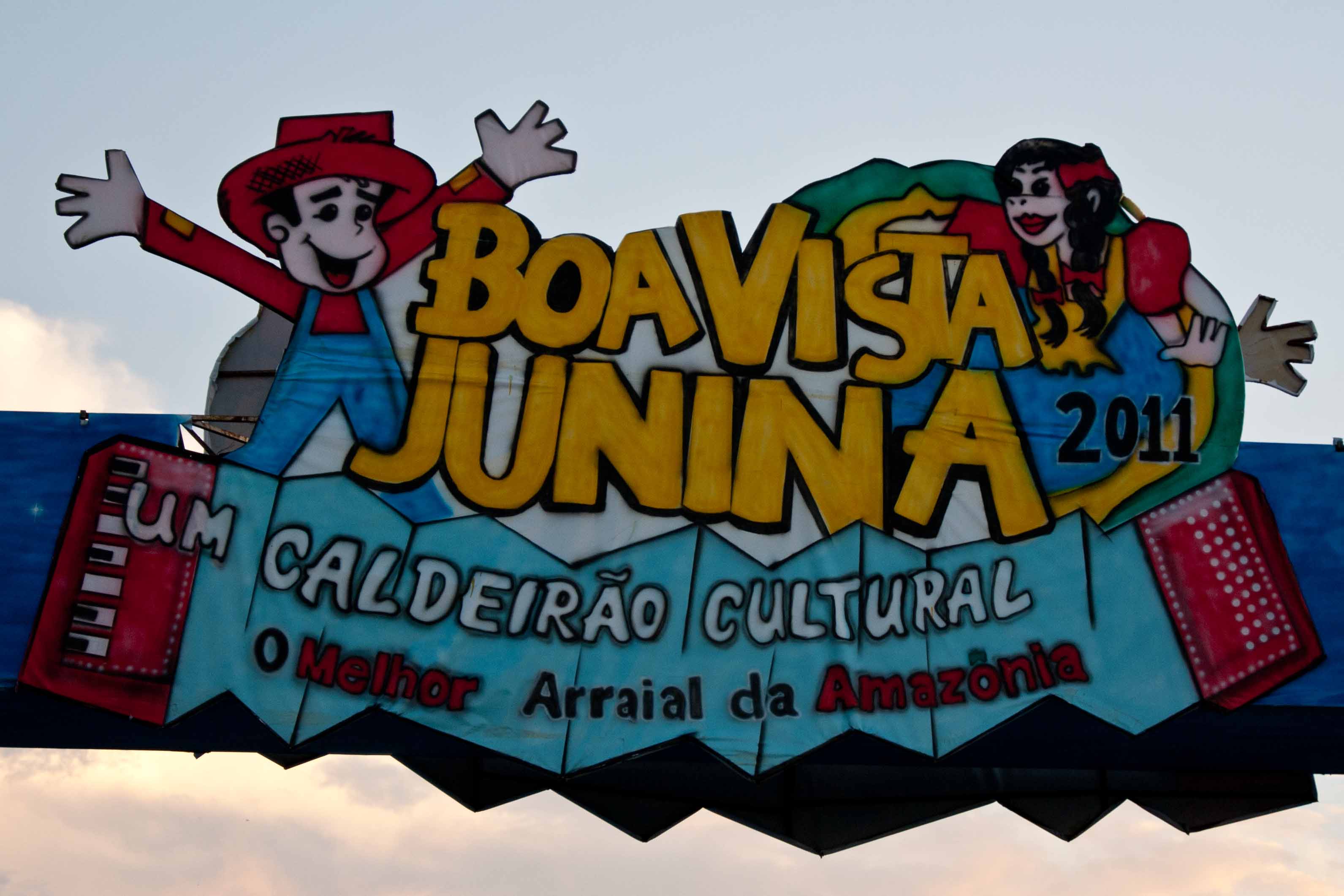 A few months ago I packed my bags and hitched a ride across the Guyana border into Brazil. I walked into Boa Vista with a sense of accomplishment, having gotten this far without any hiccups. The sky may as well have fallen on my head when I realized that no one spoke any English. This wasn’t what I expected. The locals seemed to be quite content with jabbering in Portuguese. Travelling alone, I was left with little option but to spend my first day in Brazil without speaking a word of English. What ensued in the following weeks was a mad scramble to pick up some basic Portuguese for survival.
A few months ago I packed my bags and hitched a ride across the Guyana border into Brazil. I walked into Boa Vista with a sense of accomplishment, having gotten this far without any hiccups. The sky may as well have fallen on my head when I realized that no one spoke any English. This wasn’t what I expected. The locals seemed to be quite content with jabbering in Portuguese. Travelling alone, I was left with little option but to spend my first day in Brazil without speaking a word of English. What ensued in the following weeks was a mad scramble to pick up some basic Portuguese for survival.
History
As always, there’s some good news and there’s some bad news. The good news is Portuguese is a Latin based language and English has a lot of Latin influence too. So many words do overlap. The bad news is that although Portuguese uses the same alphabet as English, the pronunciation is completely different. This could be a challenge.
Pronunciation Basics
A is ah
E is eh
I is ee
O is awe
U is oooh (as in oops)
Rules Designed to Confound and Confuse
An mentioned earlier, pronunciation can be tricky at times. A few examples below.
- The letter r sounds like the word h if its at the beginning of a word. If its in the middle of a word, its an even stronger h. If its at the end of a word, its silent.
- S when used at the end of a word becomes a z. For all other practical purposes, it’s still a s
- The letter h at the beginning of a word is silent. However if it follows an l (lh) or n (nh), it then mysteriously becomes a y. Bet you didn’t see that coming.
- G takes on a zh sounds when followed with an e or an i. Think Zsa Zsa.
Since most of this isn’t necessary for survival, we diverge. On to the fun stuff.
The Essentials
Obrigado / obrigada – Thank you (depending on whether you’re a male / female)
Desculpa – Sorry
Por favor – Please
Quanto? – How much?
Nao entendi – I didn’t understand
O banheiro, por favor? – The bathroom, please?
How you doin’?
Ola / oi – Hi
Bom dia – Good morning
Bom tarde – Good afternoon
Boa noite – Good evening / night
Chau – Bye
Ate mais – See you
Tudo bem / Tudo bom – How are you? (both equivalent to ‘wassup’)
If someone asks you Tudo bem? say Tudo bom. If it’s Tudo bom? answer back Tudo bem. Don’t waste any time trying to figure out the logic. Move on.
Pronouns
Eu – I
Voce – You
Ele – He / him
Ela – She / her
(Until you master this, bathroom usage will be tricky)
Numbers
| 1 – um | 11 – onze | 10 – des |
| 2 – dois | 12 – doze | 20 – vinci |
| 3 – tres | 13 – treze | 30 – trente |
| 4 – quarto | 14 – quatorze | 40 – quarenta |
| 5 – cinco | 15 – quinze | 50 – cinquenta |
| 6 – seis | 16 – dezeseis | 60 – sessenta |
| 7 – saiche | 17 – dezesete | 70 – setenta |
| 8 – oito | 18 – dezoito | 80 – oitenta |
| 9 – nove | 19 – dezenove | 90 – noventa |
| 10 – des | 20 – vinci | 100 – cem |
Money
Once you’re down with the numbers, a few more words to your vocab will ensure that bargaining is a breeze. Although the currency is spelt as Real (plural Reais), it is pronounced hey-ah-oh (plural hey-eyez). Another strange aspect is that decimal points don’t exist. Ignoring the far reaching implications of this to high school math, R2,85 would translate to dois reais e oitenta e cinco centavos. Drop the e’s to improve your speed. Once you’re out of cash, ask around for the caixa automatico coz an ATM just doesn’t sound cool enough.
Food
Tons of quilo (kilogram) restaurants are splashed all around town. These places encourage you to gorge yourself on a buffet with a million things on offer. You pay depending on the weight of your plate. In case you’re a vegetarian, you’d better memorize this phrase – Tem pratos vegetarianos? (do you have vegetarian dishes?) Results though are not guaranteed. Vegetarianism is to the Brazilians as religion is to the birds.
Don’t make the rookie mistake of overeating and not leaving any space for the sobremesa (dessert). Brazilian sobremesas are to die for. Request for a conta (the bill) once you’re done. If you’re at a nicer restaurant, thrown in a por favor for good measure.
Drinks
Chope – Beer
Agua – Water
Café – Coffee
Chá – Tea
Leite – Milk
Açucar – Sugar
Limao – lime
While in Brazil be sure to get your hands on a few Caiperinhas which are delicious cocktails made with limao, açucar and cachaça (sugarcane rum).
Note: 3 caiperinhas are powerful enough to make a priest dance on a barstool.
Directions
Onde fica _______ is your friend. It means ‘where is ________’ and can be used anywhere, for anything and anyone. Too easy..
Phrase of the Day
Que legal (cool)
Divided, these words might be powerless. But together, and with a few exclamation marks thrown in at the end, they can be used to respond to any possible scenario under the sun. Ignore them at your own risk.
Simple Sentences FTW
O meu nome é _______ (My name is _________)
Voce fala inglez? (Do you speak English? Pointless but what the hell!)
Eu falo Inglez – (I speak English, in Portuguese. Very classy)
Before people attempt to strangle you with their bare hands, make a smooth exit.
Por Favor, onde fica o banheiro?
Manaus sits at the mouth of the Amazon, where the Rio Branco (white river) merges with the Rio Negro (black river). Since Manaus is the largest city in this gigantic rainforest, all Amazon exploration starts and ends here. Tourists flock here in hundreds of thousands every year and since the industry is geared towards luxury travel, trips into the forest tend to burn a hole in the wallet. Having spent a day in Manaus earlier in the year, I decided to go back and see what this crazy city was all about. With a limited stash of $$$, there was little choice but to ignore the extravagant tours and get creative.
Swim with river dolphins – USD 50
The Amazon is large enough to sustain a diverse habitat and as a result, it’s the only river that plays home to river dolphins. The pink-bellied river dolphins are a curious species with funny customs. Courtship involves males diving to the bottom of the river and picking up rocks in their jaws. Size does matter and the dolphin that picks up the largest rock wins the female’s affections. A one-hour boat ride up the Rio Negro takes you to dolphin land. Humans (with fish treats) are treated as friends. The dolphins playfully swam around us and occasionally, much to my discomfort, nibbled harmlessly at my knees. Creepy.
Take a waterfall tour – USD 50
With most tourists going gaga over the prospect of trekking through the Amazon, the waterfall tour is a hidden gem. Over 85 waterfalls are splashed around Manaus. Many locals frequent these waterfalls over the weekend so if you head over on a weekday, you’re practically guaranteed a private audience with one of nature’s most destructive forces. If you work up the courage (I couldn’t), you could join the local lifeguards and try body surfing (no lifejackets, no body boards) down one of the more popular, relatively milder rapids.
Explore the local market – Free
Walking through the local market, you’ll notice that fruits and vegetables take on an alien look in Brazil. From watermelons bigger than footballs to a yellow fruit that tastes like a nut, Manaus has it all. Come Sunday, the centre of town gets cordoned off for a large Sunday street market; a great place to let loose the hidden shopper within.
Get some culture at the Teatro Amazonas – Free
Built in 1896, at the height of the rubber boom, the Teatro Amazonas is modeled on the Opera house in Paris and is a sight to behold. Magnificent from the outside, the theatre is massive on the inside with intricate carvings and painting on the walls and ceilings. Beauty and rubber extravagance aside, the best part is that most of the concerts at this theatre are free. Easier said than done though, because half the population of Manaus queues up for most shows an hour before the doors open. However, a few passion fruit caiperinjas (available outside the theatre) should ease the discomforts of sitting on the cobblestone street.
Street Music in Brazil
Music’s always in the air in Brazil…regardless of the time or the place..
Running 42km and 195 metres (or 26 miles and 385 yards) is no walk in the park. And having voluntarily signed up for and completed this act of physical torture, I can vouch for this. The name ‘marathon’ originates from the tale of a Greek messenger running from the battle of Marathon to Athens and declaring to the Greek people that they had won the battle before collapsing and dying. Recent advancements in technology now mean that running a marathon doesn’t necessarily result in death. Phew…
The Rio Drama (as it unfolded)

Running a marathon along some of the World’s most famous beaches couldn’t be too hard right?
The first 15 km passed in a haze. I had set myself a time of 5 minutes per km and stuck to this time for the first 15 km without any problems. The weather was a perfect 20 degrees without being too humid and the sun had just risen. I was tempted to increase my speed at this point but decided to go with my pre-marathon internet research and stick to the pace.
Having hit the halfway mark at my planned pace (1 hour 45 minutes), I was just about giving myself a silent pat on the back when I hit the first hill and tunnel. The gradual ascent seemed never-ending but the cool tunnel at the end of the hill helped me claw back the minutes I’d lost on the way up. The end of the tunnel marked the beginning of the stretch of Rio’s world famous beaches.
São Conrado gave way to Leblon, Ipanema and finally Copacabana. The crowds heading to the beach stopped by and offered occasional hi-fives to the exhausted runners. This was between the 25 km and 35 km point. Although I wasn’t tired, I’d already been running for 2 hours by then and my resolve was being tested. Spotting a few backpacker friends on the road with signs reading “Vai Jason” (Go Jason – in Portuguese) did a lot to keep me going.
Kilometres 35 to 42 were probably the most intense and difficult physical activity I have ever attempted. It was pure torture. I tried my best to keep my mind occupied and off the run but maintaining my pace was impossible. After having slowed down to an easy jog to grab a bottle of electrolyte, I never recovered. The brass band on Copacabana and laser show in the tunnel offered momentary respite but didn’t do much to mask the pain. The final 200m sprint didn’t seem like it was worth the effort until I noticed a 70 year old man shuffle past me. That snapped a chord and I broke into a dash for the finish.
The result: 3 hours 39 minutes and 58 seconds.
Success.
What I learnt from my first marathon
1. Train like your life depends on it
Nothing will prepare you better for a marathon than a solid 18-week training schedule. Make your schedule and then stick with it. To prepare for my 42 km run, I ran 640 km in training over a 3-month period, slowly building up my mileage every week. I used Hal Higdeon’s training calendar and downloaded it to my calendar using “Your Training Calendar.” A lot of blood and sweat goes into the marathon before you’ve run past the start line. And for good reason. 18 weeks down the line, all you’ll have to do is relax and let your training take over.
2. Don’t experiment on race-day
As you work your way through your training, you’ll pick up a few tricks and learn more about your body and your running style. Maybe sleeveless t-shirts get you sun burnt and chocolate gels spur you on. These tiny details will help you finish your marathon. Come race-day, you should know exactly when you’ll hit the halfway mark and at which km you should reach for your first gel sachet. I used a larger water bottle on race day (1L on race-day vs. 650 mL in training) and the extra weight of this bottle was on my mind throughout the entire race. Moral of the story: don’t experiment on race day.
3. Have fun
Running is fun. If you treat this marathon as a chore, it’ll end up being horrible. Remember there’s nothing as liberating as running. I kept repeating the following 3 words throughout my marathon and it made life a lot easier
Breath… Smile… Run…
As you being to enjoy this experience, focus not on the finish but on the journey. This way things get a lot easier. You notice the blue sky, the cheering crowds and all of a sudden, your legs get a lot lighter and it feels like you’re flying.
Rio is undoubtedly one of the most beautiful cities in the world. It’s not hard to see why…
1. Beaches

A perfect beach would have white sand and blue water line with beautiful mountains and a rainforest for a backdrop. Now how about all of these for a city beach? Rio’s pride and joy – Copacabana and Ipanema figure in any list of the world’s most famous or beautiful beaches. Who would need to go on holiday if this was home!
2. Sports Central

If you’re a sports fan, then Rio is heaven. With the turn of the millennium, every important sporting event has made a beeline for Rio. The Olympics looks set to take the world by storm. Rio also plays host to one of the most beautiful marathons around – all along the coast with Christ the Redemeer spurring you on.
Did I mention the Soccer World Cup?? Enough said.
3. Jesus Dude

Cristo, Christ the Redeemer, Christo Redentor, Jesus dude – call him what you want, he’s impossible to ignore in Rio and stands guard over the city. The statue up close is monstrously big and is as tall as a 13 storey building; an engineering marvel and a work of art. If you manage to drag your eyes (and cameras) away from Jesus, the gallery from the top of Corcovado offers a panoramic view of Cidade Maravilhosa (the magnificent city).
4. Pao de Acucar (Sugar Loaf Mountain)

It would seem logical that if you’ve seen one viewpoint of the city, you’ve seen them all.
Wrong.
The sugar loaf mountain, perched at the edge of the city offers spectacular views of the city on one side and the coast on the other. A pleasant hike through the park is an alternative to paying an arm and a leg for the cable car. Sunset on the sugar loaf mountain is spectacular and being able to see Jesus watch over the city is priceless. And of course a beer at the top does help enhance the overall experience.
5. Handgliding / Paragliding

Think flying off a cliff. Think Rio.
Running off a ramp 600m above sea level, cruising over the world’s largest city-forest, descending over the Atlantic Ocean and finally landing on the beach is a wild ride for any adrenalin junkie (and that’s an understatement). With the wind in your hair and the sun on your shoulders this is probably the best way to literally get a bird’s eye view of the beaches, mountains, rainforest, favelas and the city. Priced at a steep 200 USD per flight (5-10 minutes), this is a once in a lifetime opportunity (at least for the financially challenged) to fly. And taste real freedom.
6. A Walk Through Time

Something that people might forget to mention about Rio is how old it is. Beautiful buildings, remnants of Portuguese architecture are splashed across the city. They stand in start contrast to the modern day skyscrapers that threaten to take over. A walk through the centre of the city drives home the fact that Rio wasn’t built in a day (couldn’t resist) and was actually founded in the 16th Century.
7. Santa Teresa

This Bohemian neighborhood in Rio is home to budding artists and can be reached by tram from the city. The 20-minute tram ride to Santa Teresa is a treat by itself. At half a dollar (US), it’s also the cheapest tourist attraction in the city. Santa Teresa sits on a hill and offers picturesque views of the sun setting over the city. Cobblestone streets, graffiti all over the walls and tiny hole in the wall shops selling artwork makes walking through the streets of Santa Teresa quite an experience. It feels like you’ve entered a new world far removed from the hustle and bustle of the city below.
8. Music

In Brazil, music is always in the air and here Rio is no exception. The bar and club scene here is huge with the music played ranging from alternate rock to samba to the World famous Bossa Nova that incidentally originated in Rio. The Lapa Street parties draw thousands and the Sunday Night Favela Funk party is a different animal altogether. The World’s largest music festival – Rock in Rio returns for another edition in 2011, this time headlined by RHCP.
Video with Brazil street music coming your way in a couple of days. I’ve uploaded a tiny snippet for now.
9. Suco Bars

As with any big city, most people are always rushing to get somewhere, but in Brazil there’s always time to stop at a suco (juice) bar. You can choose from an endless list of fruits many of which the rest of the world are blissfully unaware of. Either that or I need to spend some time on my Portuguese. Suco bars are at every street corner and grow on you after a while. In my opinion every city could do with a healthy dose of suco bars.
10. Carnival

Come February and it’s carnival season. Perhaps the most famous carnival in the world; samba schools begin rehearsals for the carnival in September. I visited in July but was fortunate enough to stumble upon the filming of a promotion for Carnival 2012.
 Located practically in the middle of nowhere (the Amazon), Manaus faded from the spotlight after the rubber boom ended in the early 20th Century. The majestic Teatro Amazonas still stands in the middle of the city reminding everyone of the glorious yesteryears. This city still plays home to 2 million people or 50% of the people who live in the Amazon.
Located practically in the middle of nowhere (the Amazon), Manaus faded from the spotlight after the rubber boom ended in the early 20th Century. The majestic Teatro Amazonas still stands in the middle of the city reminding everyone of the glorious yesteryears. This city still plays home to 2 million people or 50% of the people who live in the Amazon.
A walk through the streets on a Sunday shows that the city is still full of life, color and beauty.
With Guyana to the East and Venezuela to the North, Boa Vista serves as Brazil’s quaint little border town (Bonfim is a village and is disqualified). Practically cut off from the rest of Brazil by the vast wilderness known as the Amazon, Boa Vista hasn’t let this hinder its development in any way. The affluence of Brazil is clearly visible on a road trip across the border from Lethem in Guyana to Boa Vista in Brazil. Mud roads turn into paved roads (and sometimes beautiful cobble-stoned streets). Standalone warehouses turn into impressive buildings. Shops turn into supermarkets. You get the point.
Despite bordering an English speaking and a Spanish speaking Country, a person who speaks anything but Portuguese is as elusive as a Goan teetotaler. Imagine the plight (and fright) of a linguistically challenged backpacker who naively rocks up without packing a word of Portuguese. Revisiting the memory of this experience is still terrifying..!! However, Brazilians are warm people with a very outgoing culture. They brushed aside all language barriers and I successfully hitchhiked across the Brazil-Guyana border into Boa Vista. I was practically treated like family by the unusual bunch of Environmentalist Evangelists who gave me a ride in their hippy Volkswagon bus.
 From a tourist perspective, there’s nothing much to do in Boa Vista. Taking a boat ride along the river to watch the sunset seems to be the only option. I got lucky and stumbled upon the annual carnival and had the privilege of watching traditional dancers compete in their colorful costumes and also managed to explore a variety of Brazilian cuisines on offer at the carnival stalls.
From a tourist perspective, there’s nothing much to do in Boa Vista. Taking a boat ride along the river to watch the sunset seems to be the only option. I got lucky and stumbled upon the annual carnival and had the privilege of watching traditional dancers compete in their colorful costumes and also managed to explore a variety of Brazilian cuisines on offer at the carnival stalls.
Music filled the air, the smell of barbequed meats filled my nostrils and caiperinhas filled my stomach (I’m a vegetarian) – this seems to be the common theme for most of my adventures in Brazil.
Garota de Ipanema
Bossa Concert at a bar in Ipanema – seemed fitting that they threw in their version of this legendary song.
Tons of Brazilian music to upload once I get hold of my computer and a decent internet connection. Watch this space..




























































